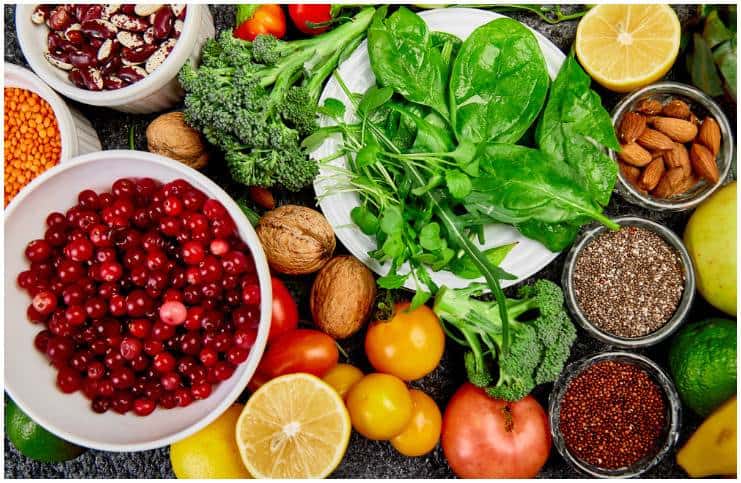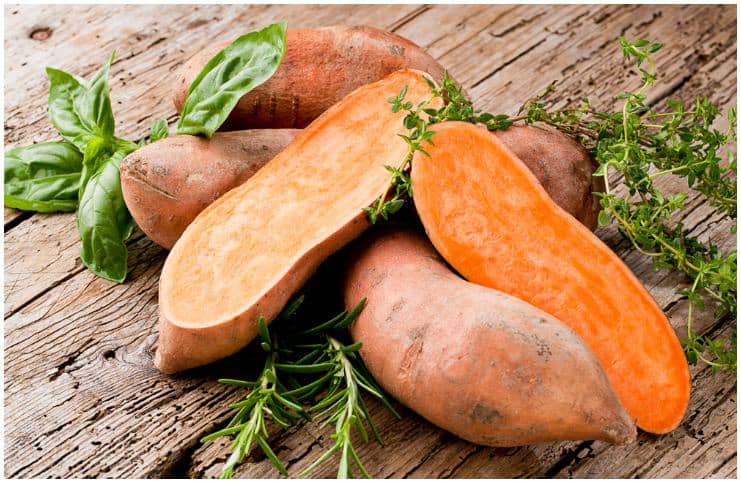12 High Galactagogue Foods and Herbs to Improve Breast Milk Supply:
A galactagogue is a substance that increases a lactating mother’s milk supply. Many cultures have special foods and herbs that are thought to enhance milk production. These vary and may contain active ingredients to fulfill this purpose.
Remember that any galactagogue will be most effective in increasing milk supply when combined with milk removal and increased breastfeeding frequency.
It’s also essential to avoid behaviors and habits that can inhibit your milk supply, such as certain allergy medications, wearing bras or tops that bind your breasts too tightly, sleeping on your stomach or smoking.
Here is a list of 12 high galactagogue foods to improve breast milk supply:
#1 Fenugreek
Fenugreek commonly increases milk production within 1 to 3 days, though for some mothers, it may take 4 to 5 days to see an effect.
Fenugreek can be used in conjunction with Blessed Thistle, again working up to 3 capsules 3 times a day. Those with thyroid issues or individuals who are hypoglycemic, or who take blood thinners may want to avoid it altogether.
#2 Fennel seeds
Fennel seeds are a common ingredient in a lactation herbal mixture or can be taken “single,” or alternated with other lactogenic beverages. Also, fennel seeds aid in digestion and prevent colic in babies.
Taken in too high a dosage, however, fennel seeds have the side effect of decreasing supply, so these seeds should be used with caution. Fennel is best used as a tincture, 2-4 ml up to three times a day, but can be taken in capsule form as well.
#3 Anise seeds
Anise is a purported galactagogue and is included in some proprietary mixtures promoted to increase milk supply.
In addition, anise is known to offer a variety of health benefits and is frequently used to encourage relaxation and ease digestive upset, gentle enough even to be given to children.
#4 Dandelion
Chinese and Native American medicine used this plant to promote postpartum quick recovery and help build milk supply. It also helps in maintaining healthy skin, and bone health and is a benefit to weight loss programs.
#5 Alfalfa leaf
A type of pea, alfalfa, has a mild effect on increasing milk supply and is commonly used in combination with fenugreek.
Additionally, alfalfa leaf contains chlorophyll, a host of minerals, such as – phosphorus, calcium, magnesium, silicon, potassium, zinc and vitamins which include – A, B1, B2, B3, B5, B6, C, D, E, and K – as well as non-essential and essential amino acids. Consider adding alfalfa to your salad or on a sandwich. It also comes as a supplement in capsule form.
#6 Brown rice
If you are a rice eater, have brown rice instead. It’s a good idea not to eat white rice while breastfeeding. Brown rice stimulates the milk-producing hormones in women and gives nursing moms the extra energy that is required post-delivery.
#7 Chickpeas
Chickpeas, also called garbanzo beans or Ceci (chi-chi) beans, are a legume used in Middle Eastern and Mediterranean cooking.
Hummus, which is traditionally made from chickpeas, garlic, tahini, lemon juice, and olive oil, is a complete protein and the perfect nutrient-dense snack for nursing moms.
#8 Foods rich in carotenes
These include cooked sweet potatoes, asparagus, apricots, green beans, carrots, tomatoes, and all cooked leafy greens, such as – mustard greens, kale, collards, beet greens, parsley, and watercress, all of which are considered important for women wishing to increase or sustain lactation.
#9 Ginger
Many Indian and Asian recipes call for ginger, so expand your menu and try cooking some international cuisine. You can also add ginger into your diet by drinking ginger ale made from actual ginger, and ginger tea.
#10 Hops
Hops are a moderate galactagogue. Furthermore, they are a powerful phytoestrogen and moderate nervine. Hops are also antiviral, and anti-cancer, and can lower blood sugar.
#11 Oats
Rich in many nutrients, and easy to digest, oatmeal is considered to increase your milk supply. Moreover, it’s a very good choice for Weight Watchers.
Other grains considered possible galactagogues include millet and barley.
#12 Turmeric
Turmeric (also known as curcumin) is a flowering plant, Curcuma longa, of the ginger family, Zingiberaceae.
Turmeric exerts potent lactogenic properties and also wards off inflammatory reactions. Avoid if allergic or hypersensitive to curcumin, yellow food colorings, or plants belonging to the Zingiberaceae and Curcuma families.
Note
Water is the main part of breast milk (90%), hence, you need to maintain a good level of water in your body. Shoot for 10-12 8oz glasses of water daily and get in the habit of drinking a glass each time before you feed your baby.
Also, milk production burns 500 calories/day, so ensuring that you are eating a good amount of energy foods (3,000 calories) is essential to improve the supply of milk.
READ THIS NEXT:
Vitamin D Supplement Side Effects
Foods to Avoid on a Tyramine Restricted Diet
References https://www.ncbi.nlm.nih.gov/pmc/articles/PMC5158159/ https://www.breastfeeding.asn.au/bfinfo/galactagogues-substances


